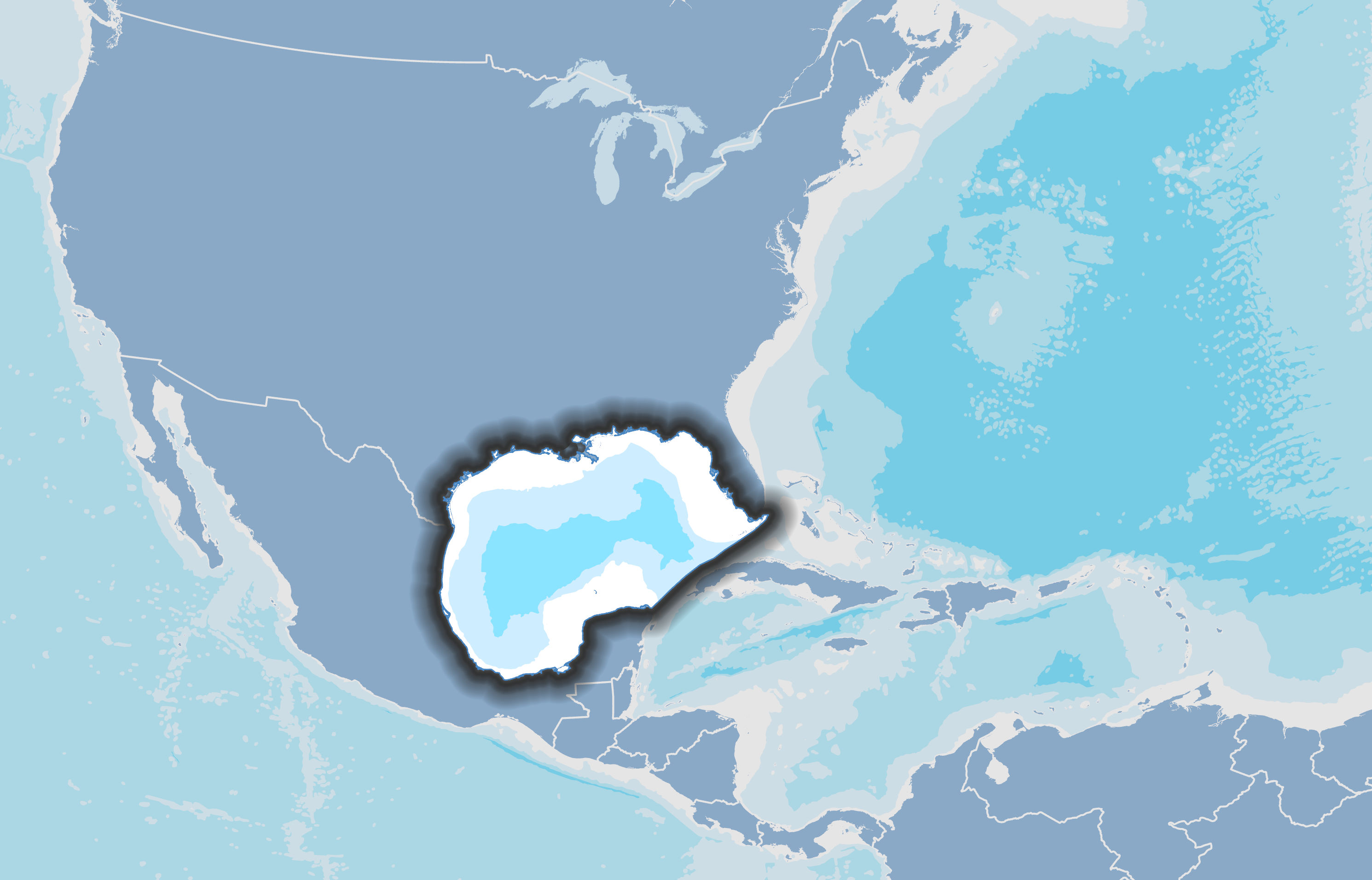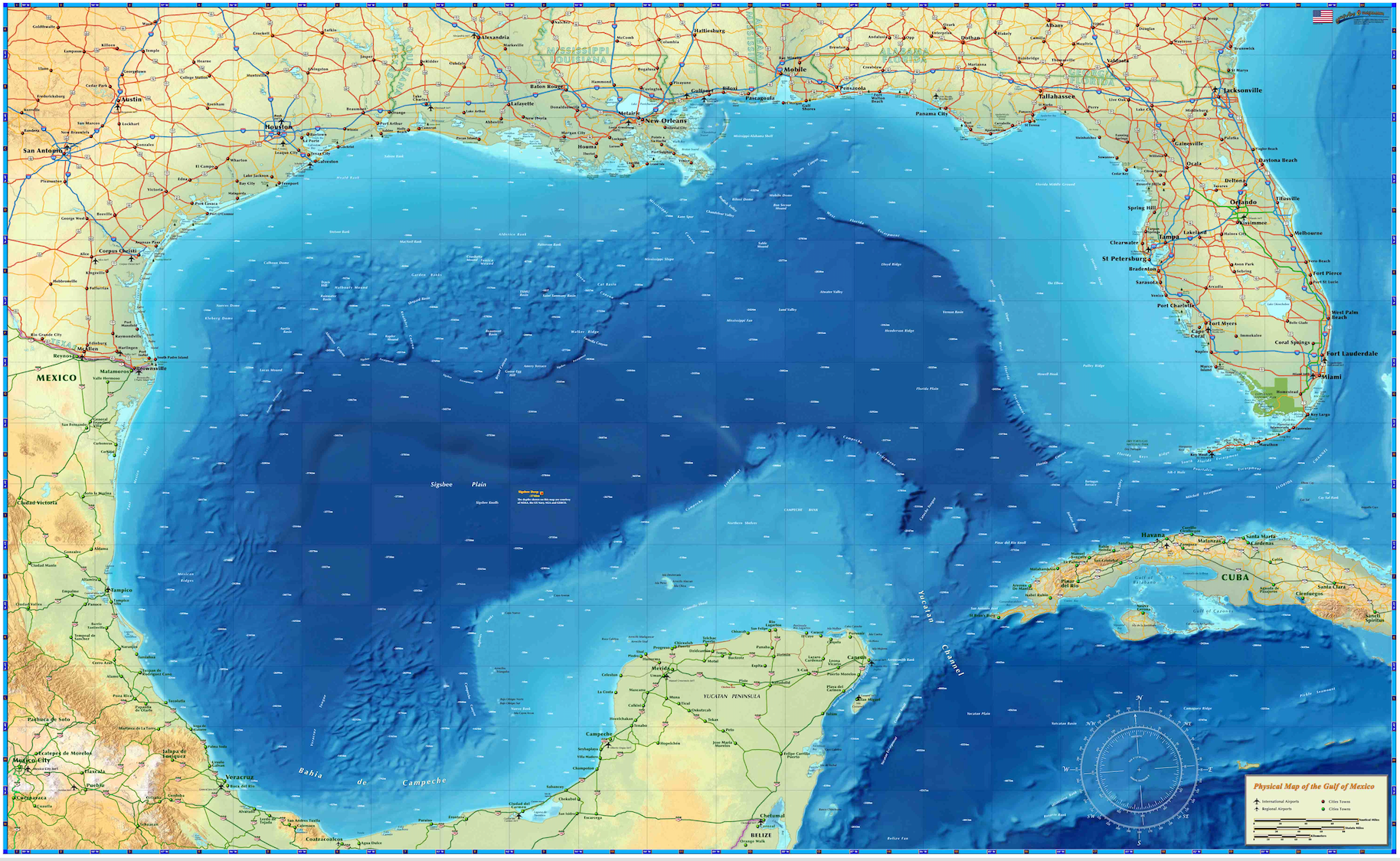When you think of the Gulf of Mexico, what comes to mind? Is it the breathtaking beaches, the vibrant marine life, or the rich history tied to its waters? The Gulf of Mexico is not just a body of water; it's an ecosystem, a resource, and a treasure trove of stories waiting to be discovered. This expansive gulf has been the center of attention for scientists, historians, and adventurers alike, offering more than meets the eye.
The Gulf of Mexico isn't just a geographical feature—it's a lifeline for millions of people and countless species. From oil rigs to coral reefs, this region plays a crucial role in the global economy and environmental balance. But did you know that the gulf holds secrets that even the most seasoned researchers are still uncovering? It's like a giant puzzle with pieces scattered across its depths.
As we dive deeper into the mysteries of the Gulf of Mexico, we'll explore its history, its significance, and the challenges it faces today. Whether you're a nature enthusiast, a history buff, or simply curious about the world around you, this article will give you a fresh perspective on one of Earth's most fascinating natural wonders. So, buckle up and get ready to uncover the hidden gems of the Gulf of Mexico!
Read also:Hd Hub 2 The Ultimate Guide To Unlocking Highdefinition Entertainment
Table of Contents
- Introduction to the Gulf of Mexico
- Geography and Location
- Ecosystem and Marine Life
- Historical Significance
- Economic Importance
- Environmental Challenges
- Tourism and Recreation
- Conservation Efforts
- Scientific Discoveries
- The Future of the Gulf of Mexico
Introduction to the Gulf of Mexico
Alright, let's get this straight. The Gulf of Mexico isn't just another body of water—it's a force of nature that shapes economies, ecosystems, and even cultures. Stretching across thousands of miles, it touches five U.S. states and connects to Mexico and Cuba. But what makes it so special? Well, it's like a giant melting pot of biodiversity, history, and opportunity.
For starters, the Gulf of Mexico is home to some of the most diverse marine life on the planet. Think about it—dolphins swimming alongside sharks, colorful coral reefs thriving beneath the surface, and migratory birds finding refuge along its shores. It's a place where nature thrives, and humans benefit from its bounty. But it's not all sunshine and rainbows. The gulf also faces challenges that demand our attention and action.
So, why should you care? Well, the Gulf of Mexico affects everything from the food on your plate to the fuel in your car. It's a critical part of the global ecosystem, and understanding its complexities can help us protect it for future generations. Stick around, and we'll break it all down for you.
Geography and Location
Let's talk geography, shall we? The Gulf of Mexico is like a giant basin surrounded by land. It's bordered by the United States to the north, Mexico to the west, and Cuba to the southeast. Picture it as a giant bathtub that's about 600,000 square miles wide. That's a lot of water!
Key Features
Here are some standout features of the Gulf of Mexico:
- Coastline: The gulf boasts over 2,000 miles of coastline, offering everything from sandy beaches to mangrove forests.
- Depth: While parts of the gulf are relatively shallow, it also has deep basins that reach depths of over 14,000 feet.
- Currents: The Loop Current plays a significant role in the gulf's weather patterns and marine life distribution.
Its unique geography makes the Gulf of Mexico a hotspot for both natural and human activities. From fishing to oil exploration, this region is a hub of economic activity. But with great power comes great responsibility, and managing the gulf's resources sustainably is a challenge we all face.
Read also:Court Statement To Family Killer Unveiling The Truth Behind Justice And Closure
Ecosystem and Marine Life
Now, let's dive into the heart of the Gulf of Mexico—the ecosystem. It's like a giant underwater city bustling with activity. From the tiniest plankton to the massive whale sharks, every creature plays a role in maintaining the balance of this delicate system.
Marine Biodiversity
Here are a few highlights of the gulf's marine life:
- Coral Reefs: These underwater rainforests are home to countless species and are crucial for protecting coastlines.
- Sea Turtles: The gulf is a nesting ground for several species of sea turtles, including the endangered Kemp's ridley.
- Fish Species: From red snapper to blue marlin, the gulf is a paradise for anglers and seafood lovers alike.
But here's the kicker—the ecosystem is under threat. Overfishing, pollution, and climate change are putting pressure on the gulf's fragile balance. It's up to us to ensure that this vibrant world beneath the waves remains healthy for generations to come.
Historical Significance
Alright, let's rewind the clock. The Gulf of Mexico has a rich history that dates back thousands of years. Indigenous peoples were the first to call its shores home, relying on its resources for survival. Fast forward to the age of exploration, and you've got European settlers setting up shop along the gulf's coastline.
Did you know that the Gulf of Mexico played a key role in the American Civil War? Its strategic location made it a battleground for naval forces. And let's not forget the oil boom of the 20th century, which transformed the region into an economic powerhouse. But with progress comes challenges, and the gulf has seen its fair share of ups and downs.
Economic Importance
Now, let's talk money. The Gulf of Mexico is a goldmine of economic opportunities. It's one of the largest oil-producing regions in the world, supplying a significant portion of the United States' energy needs. But it's not just about oil—fishing, shipping, and tourism are also major contributors to the local economy.
Key Industries
Here's a breakdown of the gulf's economic impact:
- Oil and Gas: The gulf accounts for a large percentage of U.S. oil production, making it a vital energy source.
- Fishing: From commercial fishing to recreational angling, the gulf supports a thriving seafood industry.
- Tourism: With its stunning beaches and vibrant culture, the gulf attracts millions of visitors each year.
But here's the thing—balancing economic growth with environmental sustainability is no easy feat. It's a tightrope walk that requires careful planning and collaboration from all stakeholders.
Environmental Challenges
Let's get real for a moment. The Gulf of Mexico faces some serious environmental challenges. From oil spills to dead zones, the gulf is under siege from multiple fronts. But what are these challenges, and how are they impacting the region?
Major Threats
Here are some of the biggest environmental concerns:
- Oil Spills: Accidents like the Deepwater Horizon disaster have had devastating effects on marine life and local communities.
- Dead Zones: Excess nutrients from agricultural runoff create oxygen-depleted areas that harm marine life.
- Climate Change: Rising sea levels and increasing water temperatures are altering the gulf's ecosystem.
It's a tough battle, but there's hope. Scientists, policymakers, and activists are working tirelessly to find solutions and mitigate these challenges. But it's a team effort, and every little bit helps.
Tourism and Recreation
Alright, let's talk fun. The Gulf of Mexico is a playground for tourists and locals alike. Whether you're into beach bumming, fishing, or diving, the gulf has something for everyone. Its crystal-clear waters and sunny skies make it a year-round destination for adventure seekers.
Popular Activities
Here are some must-try experiences in the Gulf of Mexico:
- Beach Days: From Pensacola Beach to South Padre Island, the gulf offers some of the best beaches in the world.
- Fishing: Whether you're a seasoned angler or a first-timer, the gulf is a paradise for fishing enthusiasts.
- Diving: Explore the underwater world of the gulf and discover its hidden treasures.
But here's the catch—tourism can also have a negative impact on the environment. It's all about finding that sweet spot where fun meets responsibility. So, next time you visit the gulf, remember to leave nothing but footprints and take nothing but memories.
Conservation Efforts
Now, let's talk about the good stuff—conservation efforts. There are countless organizations and initiatives dedicated to protecting the Gulf of Mexico. From restoring wetlands to cleaning up beaches, these efforts are making a real difference.
Key Initiatives
Here are some of the most impactful conservation programs:
- Restoration Projects: Efforts to restore damaged habitats, such as coral reefs and wetlands.
- Education Programs: Raising awareness about the importance of protecting the gulf's resources.
- Policy Changes: Implementing regulations to reduce pollution and protect marine life.
It's inspiring to see so many people coming together to make a difference. But the work doesn't stop here. Every action counts, and even small changes can have a big impact.
Scientific Discoveries
Alright, let's get nerdy. The Gulf of Mexico is a hotbed for scientific research. From studying marine life to monitoring climate change, scientists are uncovering new insights every day. But what are some of the most exciting discoveries?
Notable Findings
Here are a few groundbreaking discoveries:
- New Species: Researchers are constantly discovering new species in the gulf's depths.
- Climate Data: The gulf provides valuable data for understanding global climate patterns.
- Technological Advances: Innovations in underwater exploration are opening up new possibilities for research.
Science is the key to unlocking the gulf's secrets, and these discoveries are paving the way for a brighter future. But it's not just about the data—it's about how we use it to make informed decisions.
The Future of the Gulf of Mexico
So, where do we go from here? The future of the Gulf of Mexico depends on the actions we take today. Whether it's reducing pollution, protecting endangered species, or promoting sustainable practices, every effort counts. But it's not just about the environment—it's about the people who depend on the gulf for their livelihoods.
As we look to the future, it's important to remember that the Gulf of Mexico is more than just a body of water—it's a shared responsibility. By working together, we can ensure that this natural wonder continues to thrive for generations to come.
Conclusion
In conclusion, the Gulf of Mexico is a treasure trove of natural beauty, historical significance, and economic opportunity. From its vibrant ecosystem to its rich history, the gulf offers something for everyone. But it's also a reminder of the challenges we face in protecting our planet's resources.
So, what can you do? Start by educating yourself and others about the importance of the Gulf of Mexico. Support conservation efforts, reduce your environmental footprint, and advocate for policies that protect our natural world. Together, we can make a difference.
And hey, don't forget to share this article with your friends and family. The more people who understand the value of the Gulf of Mexico, the better chance we have of preserving it for the future. So, what are you waiting for? Dive in and make a splash!


